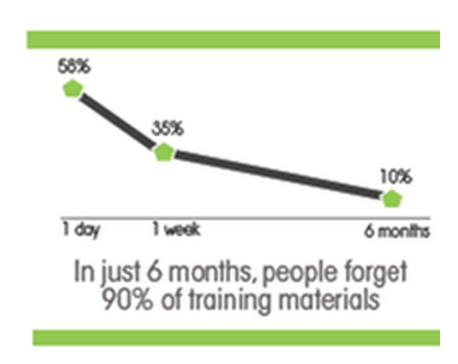- Onboarding
How to Develop a Video Onboarding Process That Works

In recent years the very notion of employee onboarding has evolved a great deal.
 Gone are the days when “onboarding” referred only the 2-hour meeting with HR to complete a dozen forms, traditionally followed by coffee with the hiring manager before being assigned a desk and a list of responsibilities. These days, onboarding best practices follow a more holistic, long-term approach.
Gone are the days when “onboarding” referred only the 2-hour meeting with HR to complete a dozen forms, traditionally followed by coffee with the hiring manager before being assigned a desk and a list of responsibilities. These days, onboarding best practices follow a more holistic, long-term approach.
According to the Society for Human Resources Development (SHRM), employee onboarding (also known as organizational socialization) is the “process of helping new hires adjust to social and performance aspects of their new jobs quickly and smoothly, and learn the attitudes, knowledge, skills, and behaviors required to function effectively within an organization.”
In short, employee onboarding involves the processes that help you ensure that your new hires get started on the right foot.
Today’s most successful onboarding processes deliver information in the ways people learn best – introducing new materials in bite-sized chunks over time and repeating key concepts to ensure new hires learn what they need to know in full and retain the information.
Exactly how these components translate into an effective, easily-manageable employee onboarding process will be unique to every organization. However, in our experience from helping hundreds of organizations around the world use video to share knowledge, we’ve identified seven core steps our customers have used to plan and execute effective video-supported onboarding processes.
Seven Essential Steps For Designing A Video-Based Onboarding Process
1. Identify a set of core onboarding training activities for every new employee
However your organization chooses to onboard new hires, the first step in designing your onboarding process is to identify what training your new hires need.
2. Determine which of your core onboarding activities can be supplemented with on-demand video training
There are a host of ways for using video to scale and support your onboarding process, from cultural insights to technical skills training. Looking for ideas to help get you started? Check out these five popular types of onboarding videos you can easily create.
3. Map out a weekly onboarding schedule for each new employee’s first 60 or 90 days
Keep the timeline somewhat flexible, particularly at first, by identifying onboarding requirements as a weekly set of expectations, rather than a formal daily schedule. This allows your new hires to more easily fit onboarding in alongside the demands of their new roles and gives them the ability to review your training materials at their own pace. Of course, the time that the viewing schedule takes employees to complete will vary by organization, but we recommend that you plan to spread out the onboarding activities over the course of the employee’s first one to two months, as experts believe that doing so increases employee retention rates significantly.
4. Repeat the above steps with role-, department-, and location-specific videos
Here’s where the best onboarding processes stand apart. Once you’ve mapped out the essential onboarding tasks for every employee, begin tailoring specialized onboarding processes by mapping out valuable additional resources for specific roles, departments, or locations. We recommend that companies first focus their efforts on a select group of roles (e.g. job-specific sales and customer support training) and locations (e.g. local strategies for the Dallas region, for example, or regional regulations impacting UK stores). Then build on this foundation to ultimately include all roles and locations.
5. Document the process and share it with other departments so they can add additional content
This most straightforward step is the most essential — and often the most helpful. Sharing your onboarding map across departments gives you the opportunity to add more useful cross-functional training activities to the map. Sharing your map can also help ensure your organization buys into the new program.
6. Make the onboarding experience consistent with automated messages
Collaborate with your corporate communications or internal email communications teams to create an automated email “drip campaign” to share onboarding videos with new staff as planned on schedule. Most enterprise email systems make this easy — simply write a set of emails sharing links to videos and note the cadence at which they should be sent to a new employee. Once you’ve got the process set up, each new employee will automatically receive your emails just as you scheduled them, ensuring everyone receives a consistent onboarding experience.
7. Use video analytics to monitor viewing activity
Once your maps are in place and your communications are set, watch to ensure the system works as expected. With an enterprise video platform you’ll be able to see broad viewing trends across the organization and know when and how often each employee watched any particular video, as well as whether that employee watched a video in full or stopped short. While this information proves invaluable to evaluating the effectiveness and compliance of individual team members, it can also be used to measure the effectiveness of your training process.
Upgrade Your Employee Onboarding Experience With Video
Learn more ways that Panopto’s employee onboarding software can improve new hire training at your company by downloading our latest white paper, 5 Strategies to Optimize and Accelerate Onboarding




